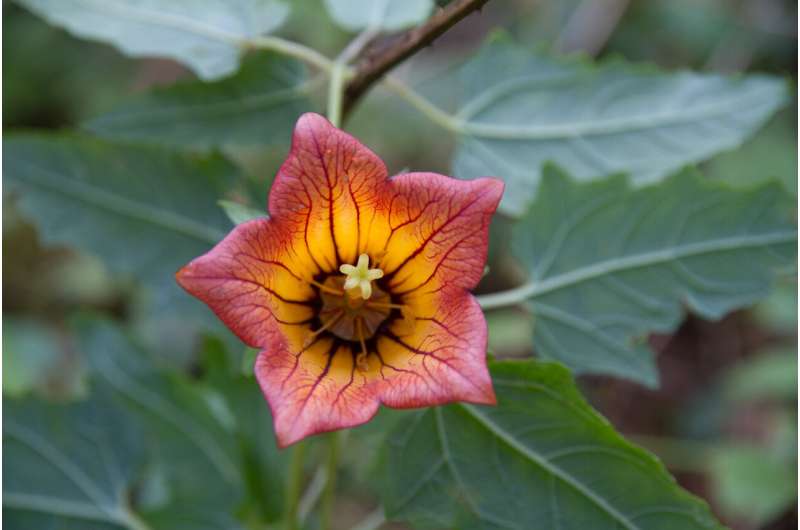This article has been reviewed according to Science X's editorial process and policies. Editors have highlighted the following attributes while ensuring the content's credibility:
fact-checked
peer-reviewed publication
proofread
Global patterns of biodiversity in seed plants unveiled

Understanding the origins and preservation of biodiversity is crucial as human impact continues to threaten our planet's rich variety of life. Often overlooked, narrow-ranged and evolutionary unique species play a vital role in shaping biodiversity. Their concentrated presence, quantified as phylogenetic endemism, reveals important centers of biogeographic and evolutionary history.
A new study led by a team of international researchers at the University of Göttingen has now uncovered global patterns and factors influencing phylogenetic endemism in seed plants, providing invaluable insights for conservation efforts worldwide. The findings were published in PNAS.
Analyzing a comprehensive dataset of regional plant inventories spanning 912 geographical regions worldwide and encompassing approximately 320,000 species, the researchers unveiled the geographic distribution of phylogenetic endemism.
Distinguishing between "recently" evolved species and older evolutionary lineages, they were able to identify centers of neo- and paleoendemism. Neoendemism is the limited geographical distribution of evolutionary young species which have not yet spread widely. In contrast, paleoendemism describes the limited distribution of mostly older species that today only occur in remnant areas of their once larger ranges.
The study uncovered isolated tropical and subtropical islands, along with mountainous tropical areas, as global hotspots for phylogenetic endemism in seed plants. Additionally, the research highlighted that most tropical rainforest regions are centers of paleoendemism, while many islands and mediterranean-climate regions exhibit high levels of neoendemism or both.
By examining the interplay between environmental factors and endemism, the research team discovered that a combination of past and present environmental conditions shaped the global variation in phylogenetic endemism. The study demonstrated that both climatic and geological history influence neo- and paleoendemism, with long-term climatic stability supporting the persistence of paleoendemics and the isolated nature of oceanic islands and their unique geological histories promoting neoendemism.
Professor Holger Kreft, from the Biodiversity, Macroecology, and Biogeography Group at the University of Göttingen, emphasized the significance of the study, stating, "The unveiled relationships between past and present environments and phylogenetic endemism provide unprecedented insights into the evolutionary foundations of biogeographical patterns in seed plants."
Dr. Patrick Weigelt, from the same group, adds, "Our findings do not only enhance our understanding of the evolutionary origins of plant diversity, but also emphasize the urgent need to protect areas inhabited by narrow-ranged species that represent unique evolutionary histories."
More information: Lirong Cai et al, Climatic stability and geological history shape global centers of neo- and paleoendemism in seed plants, Proceedings of the National Academy of Sciences (2023). DOI: 10.1073/pnas.2300981120
Journal information: Proceedings of the National Academy of Sciences
Provided by Georg-August-Universität Göttingen




















